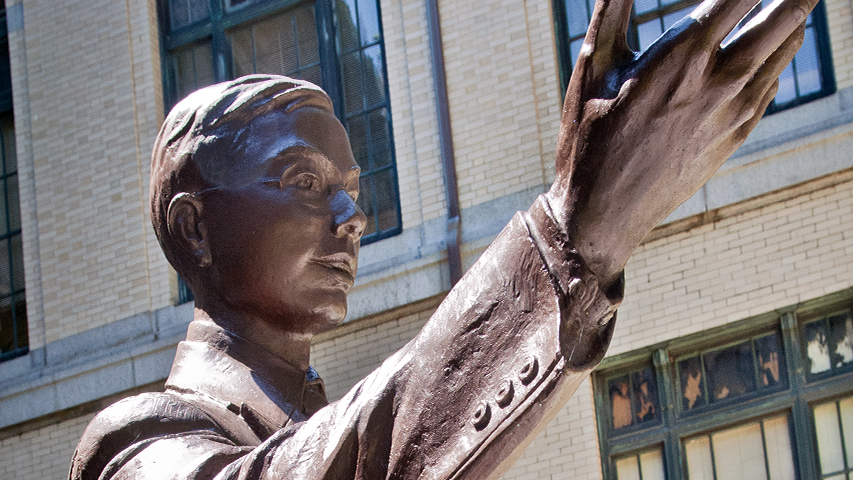Great-granddaughter Follows Path of CMU's First Ph.D. Graduate

Anyone who has walked through the Mall on Carnegie Mellon's Pittsburgh campus has seen him.
Nestled in an inlet between Baker and Porter halls, surrounded by stone benches and an elaborate plaque, a bronze man stands proud vest fitted under his suit coat, leg extended, hand outstretched. To many of today's students, it's one more statue to shuffle past on the way to this class. But to mechanical engineering and materials science and engineering senior Patricia Xu, it's more than a statue: it's her great-grandfather.
In 1919, Mao Yisheng was the recipient of the first Ph.D. ever given by the Carnegie Institute of Technology, now known as Carnegie Mellon University.
Born in China, in Zhenjiang, Jiangsu province, Yisheng received his bachelor's degree in civil engineering from Jiaotong University's Tangshan Engineering College. Prior to his time in Pittsburgh, he earned his master's degree from Cornell University.
His world-class education set him on a path of renown — he designed two of China's most famous modern bridges, the Qiantang River Bridge and the Wuhan Yangtze River Bridge, and to this day is regarded as the father of modern bridge engineering.
"I first heard of CMU when my dad was invited to attend the unveiling of my great-grandfather's statue," said Xu, who will graduate on May 15. "Then when I was applying to colleges, my parents suggested I apply because it has a really good engineering school, and a well-known robotics program, both of which I was very interested in."
Xu came to Carnegie Mellon in 2012 with dual ambitions in Mechanical Engineering and Materials Science, and quickly began work in the lab of MSE Professor Michael McHenry. She spent her freshman year working on the creation of nanocomposite, magnetic, nanocrystalline ribbons. These ribbons are being used in the development of more efficient power generators.
By her sophomore year, Xu was ready to take her research to the next level. She applied for, and received, an SRC-URO grant — which is an undergraduate research opportunity funded by the Semiconductor Research Corporation — to research the use of these nanocrystalline ribbons in motors. Through computer simulation and prototype testing methods, she determined that these ribbons are able to create motors that are more efficient and more powerful than any on the market.
She has begun working on a project to study high-entropy alloys for their magnetocaloric effect, which would allow them to be used in magnetic refrigeration.
Like her great-grandfather, Xu is excited to dedicate her life to moving the world forward. But where Yisheng's time needed bridges, the modern world has a slightly more high-tech future.
"I hope to be able to use my knowledge of both materials science and mechanical engineering to someday make robots that will be able to effectively interact directly with the public," she said.
But while her path may be her own, Xu said she knows she is a part of the legacy of Carnegie Mellon and her family. Every time she walks past her great-grandfather's statue, she is reminded that she stands on the shoulders of giants.
"If I could speak to him now," she said, "I would tell him, 'thank you for inspiring me to come to CMU, to work harder, and to make a difference in other people's lives.'"